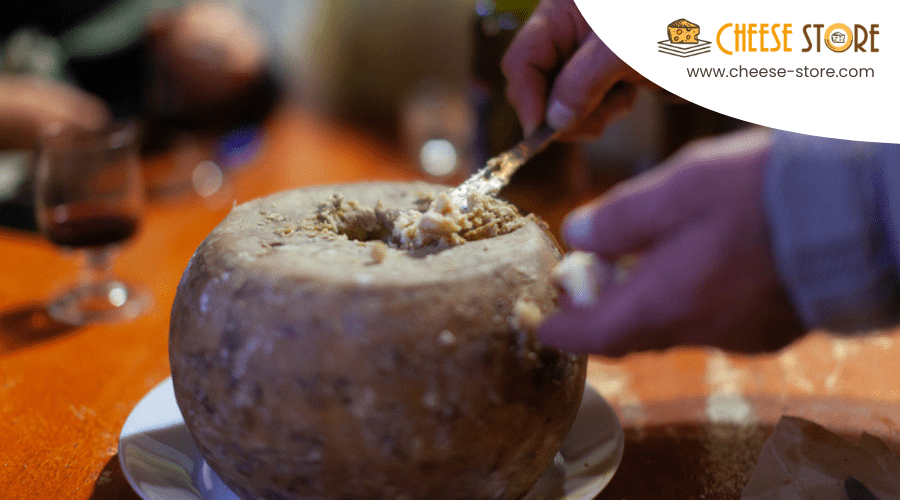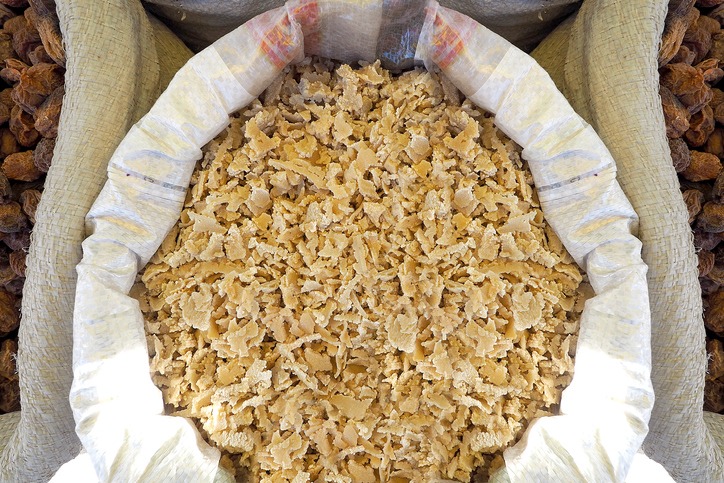When you think of unusual cheeses, you might think of Casu Marzu, which contains live maggots, or Milbenkase, aged with dust mites. But have you ever considered Yak Cheese from Tibet or Moose Cheese from Sweden? These cheeses are not just about shock value; they represent unique cultural traditions and extraordinary production methods.
Imagine tasting cheese made from Balkan donkeys’ milk or fermented lichen. Each of these varieties pushes the boundaries of what cheese can be, offering flavors and textures you likely haven’t experienced.
Curious about what makes these cheeses so special? Let’s get started.
Casu Marzu
Imagine tasting a cheese that’s intentionally infested with live maggots—welcome to Casu Marzu. This Sardinian delicacy takes the concept of ‘aged’ to a new level by allowing pecorino cheese to undergo a unique fermentation process. Flies lay their eggs on the cheese, which hatch into larvae that burrow through and break down the fats, creating a soft, creamy texture.
Casu Marzu is an Italian cheese known for pushing boundaries, earning it the title of the most dangerous cheese in the world, even acknowledged by celebrity chef Gordon Ramsay. The live maggots are integral to the fermentation process, giving the cheese its distinctive characteristics. However, the notion of consuming live insects can be unsettling for many, and it’s legally consumed only in Sardinia, Italy.
Renowned for its strong, pungent flavor and lingering aftertaste, Casu Marzu is often considered an acquired taste. While some see it as a culinary adventure, others view it as a gastronomic challenge.
Would you dare to try this bold delicacy?
Milbenkase
Milbenkäse is a unique German cheese known for its aging process involving dust mites. The enzymes from these mites imbue the cheese with a distinctive black, bitter, and zesty flavor. For those seeking an adventurous culinary experience, Milbenkäse offers a memorable taste.
Milbenkäse is renowned for its extraordinary aging process. This unique method involves dust mites secreting enzymes onto the cheese, which significantly contribute to its unique flavor profile and purported health benefits. The meticulous aging process takes place in Würchwitz, where the cheese evolves to resemble a loaf of rye bread, acquiring a specific color and texture.
As the cheese matures, it turns black, indicating it is ready for consumption. This transformation results in a product that is both bitter and zesty, offering a taste that may be an acquired preference. The dust mites are indispensable, enhancing both the flavor and the potential health benefits, such as alleviating allergies.
Pule Cheese
Pule cheese, a luxurious and rare delicacy from Serbia, is crafted from the milk of Balkan donkeys. Known for its rich flavor and high cost, it stands out from cheeses made from cows’ milk. The cheese is produced at the Zasavica Special Nature Reserve, where a herd of 100 donkeys is hand-milked. It takes a significant amount of milk to produce even a small batch, contributing to its exclusivity.
New York chef Daniel has compared its production process to that of high-quality wines. Pule cheese is so rare that some people compare its nutritional value to human breast milk due to its high vitamin C content, making it both a gastronomic delight and a nutritional powerhouse.
Each bite of pule cheese offers a luxurious and unique experience, highly sought after by cheese connoisseurs worldwide. The high cost associated with pule cheese supports conservation efforts for the Balkan donkeys, adding extra significance to every purchase. If you’re fortunate enough to try it, you’ll understand why this cheese is considered one of the most unusual and coveted in the world.
Yak Cheese
If you ever find yourself in Tibet or Nepal, don’t miss the chance to try yak cheese, a rich and earthy delicacy deeply embedded in the local culture. This unique cheese, cherished for its hard texture and distinct flavor, is made from yak milk and is packed with protein and healthy fats, making it both delicious and nutritious.
Yak cheese is often cut into pieces and dried, transforming it into a popular snack among locals. The drying process intensifies its flavor, resulting in a delicate and nutty profile that stands out from other cheeses. Both tourists and locals savor this culinary gem, which is essential in the diet of Tibetan communities.
Yak cheese not only offers a unique taste experience but also provides significant nutritional benefits, making it a must-try for anyone visiting these high-altitude regions.
Moose Cheese
From the high-altitude regions of Tibet, let’s travel to Sweden to explore the unique and rare moose cheese crafted at The Elk House. Located in Bjurholm, this dairy delight is made from moose milk, offering cheese enthusiasts an unparalleled tasting experience.
The Elk House specializes in producing a variety of moose cheese types, including feta and blue cheese, each with its own rich and distinct flavor profile.
Cheese production at The Elk House is a meticulous process, ensuring that every bite of moose cheese is infused with unique flavors that you won’t find anywhere else. The moose milk used not only creates these extraordinary cheeses but also serves as a base for innovative cocktails, adding another layer of creativity to Swedish culinary arts.
Moose cheese stands out as a specialty product, exemplifying the diversity and innovation in Swedish cheese-making. It’s a must-try for anyone passionate about unique and exquisite cheeses.
Camel Milk Cheese
Camel milk cheese offers a unique and exotic flavor profile that’s unlike any other cheese. Originating from African countries such as Ethiopia, Sudan, and Mauritania, this cheese is made using milk that contains more fat and protein than cow’s milk. The production process involves using rennet derived from a camel’s stomach, adding to its complexity. The result is a cheese with a distinct sour taste and a strong aroma, making it one of the more unusual cheeses available.
While you might associate pungent flavors with blue cheese, camel milk cheese elevates this characteristic to another level. Despite its formidable smell, it’s becoming more accessible, with some supermarkets now carrying it.
The cheese-making process often involves traditional methods, including occasionally utilizing a wood fire. The rich flavor of camel milk adds a unique twist, offering a different cheese experience due to its source and the challenging production methods involved.
For those adventurous enough to try something truly out of the ordinary, camel milk cheese is a must-add to your culinary explorations.
Lichen Cheese
Lichen cheese offers a unique and adventurous culinary experience with its blue-cheese-like flavor and innovative production process inspired by Inuit cuisine. Made from fermented lichen, this Quebec creation highlights the creativity in cheese-making, appealing to those who enjoy exploring distinctive and niche tastes.
Lichen Cheese stands out for its unique production process, inspired by Inuit traditions and crafted from fermented lichen. This innovative method deviates from conventional dairy-based practices, utilizing lichen—a symbiotic organism found in Arctic regions—as its primary ingredient.
The production process begins with careful harvesting of the lichen, followed by a fermentation step that transforms its natural properties. This critical fermentation process imparts a distinct flavor profile to the cheese, reminiscent of blue cheese. The result is a product that exemplifies creative cheese-making techniques while pushing the boundaries of traditional methods.
Conclusion
Exploring the world of unusual cheeses like Casu Marzu, Milbenkase, Pule Cheese, Yak Cheese, Moose Cheese, Camel Milk Cheese, and Lichen Cheese takes you beyond the ordinary. Each cheese offers a unique taste and fascinating history, pushing the boundaries of traditional cheese-making.
Don’t hesitate to step out of your comfort zone and try these extraordinary culinary delights. You’ll discover that cheese-making is an art full of surprises and exceptional flavors.



